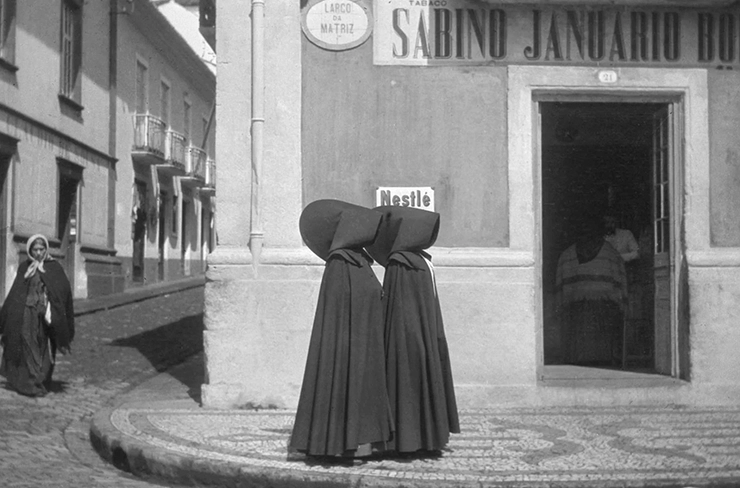
While nearly all European countries’ fashion and clothing looks almost identical these days, during the earlier times Portugal used to have some distinctive national clothes pieces. The Fashiongton Post will shed some light on this traditional attire in our complete guide to Portuguese Clothing.
Capote and Samarra
In the northern regions of Portugal, particularly among shepherds, the Capote and Samarra are essential outerwear. Capote is a long, woolen cloak designed to protect against the cold, often featuring a large hood.
Samarra, on the other hand, is a shorter, hip-length jacket made from thick wool, typically adorned with fur around the collar. These garments are practical and emblematic of the rural lifestyle in Portugal’s colder regions.
Chula Costume
The Chula costume is a traditional outfit worn during folk dances, particularly in Minho. For women, the costume includes a vibrant, layered skirt, a richly embroidered blouse, and an apron. A black shawl, often embroidered with colorful patterns, is draped over the shoulders. Men wear dark trousers, a white shirt, and a waistcoat, frequently accessorized with a red sash and a black hat. The Chula costume’s bright colors and intricate embroidery reflect the festive spirit of Portuguese folk traditions.
Viana Costume
The Viana costume, from the Viana do Castelo region, is another notable traditional outfit. Women wear brightly colored skirts, usually in red or blue, with gold embroidery. The blouse is white with puffy sleeves, and an embroidered apron is tied at the waist. What truly sets the Viana costume apart is the “traje de lavradeira”—an elaborate headscarf and a lavish display of gold necklaces and earrings, signifying wealth and status.
Nazarene Costume
In the coastal town of Nazaré, the Nazarene costume is a distinctive traditional outfit. Women wear seven layers of petticoats, representing the seven waves of the sea. The top layer is often brightly colored and patterned, while the underlying layers are white. The blouse is usually white with lace accents, and a colorful kerchief is worn on the head. This costume is a nod to Nazaré’s fishing heritage and its connection to the ocean.
Campino Attire
The Campino attire, worn by the cowherds of Ribatejo, is an iconic representation of Portuguese rural life. Men wear tight-fitting dark trousers, a red waistcoat over a white shirt, and a broad-brimmed black hat. A long wooden staff, used to guide cattle, completes the ensemble. This outfit is not only functional for the cowherds’ work but also a proud symbol of their cultural identity.
Modern Influence and Preservation
Despite the fact that the traditional Portuguese clothing is often reserved for festivals and folklore performances, modern designers sometimes incorporate traditional elements into contemporary fashion, ensuring these rich cultural symbols remain part of Portugal’s sartorial landscape.
The post Complete Guide to Portuguese Clothing appeared first on The Fashiongton Post.
